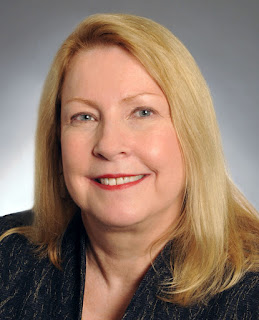Vanitas (by Peter Claesz) means "emptiness" - the meaninglessness of earthly life and the transient nature of vanity.
 NMS Healthcare of Hagerstown is a skilled nursing facility. It confined one of its residents and restricted her access to members of her family and others. NMS did this at the request of the resident's daughter even though there was no medical or other basis for doing so.
NMS Healthcare of Hagerstown is a skilled nursing facility. It confined one of its residents and restricted her access to members of her family and others. NMS did this at the request of the resident's daughter even though there was no medical or other basis for doing so.
 |
| MN Senator Chris Eaton |
 As I blogged here in March 2015, the family of Jahi McMath filed a medical malpractice action against Oakland Children's Hospital and several individual clinicians.
As I blogged here in March 2015, the family of Jahi McMath filed a medical malpractice action against Oakland Children's Hospital and several individual clinicians.
 Join me tomorrow, Tuesday, June 23rd at 9:00, on Minnesota Public Radio. From the producer's notes:
Join me tomorrow, Tuesday, June 23rd at 9:00, on Minnesota Public Radio. From the producer's notes:
 Washington Adventist Hospital in Takoma Park, Maryland was recently sanctioned by CMS for looking to a surrogate rather than to the patient herself when the patient still had capacity.
Washington Adventist Hospital in Takoma Park, Maryland was recently sanctioned by CMS for looking to a surrogate rather than to the patient herself when the patient still had capacity.
 Various Ontario tribunals have issued quite a few decisions (example) arising out of the civil and administrative complaints filed by Elizabeth Wawrzyniak against several clinicians at Sunnybrook Health Sciences Center involved in the death of her father on September 22, 2008. The latest one (23 single-spaced pages) was delivered just a few days ago by the College of Physicians and Surgeons of Ontario.
Various Ontario tribunals have issued quite a few decisions (example) arising out of the civil and administrative complaints filed by Elizabeth Wawrzyniak against several clinicians at Sunnybrook Health Sciences Center involved in the death of her father on September 22, 2008. The latest one (23 single-spaced pages) was delivered just a few days ago by the College of Physicians and Surgeons of Ontario.
 Northwest Hospital Center in Randallstown, Maryland received this statement of deficiencies compiled by health inspectors for the Centers for Medicare and Medicaid Services.
Northwest Hospital Center in Randallstown, Maryland received this statement of deficiencies compiled by health inspectors for the Centers for Medicare and Medicaid Services.
 Neera Bhatia is a Lecturer at Deakin University School of Law, Australia. She has just published Critically Impaired Infants and End of Life Decision Making: Resource Allocation and Difficult Decisions (Routledge June 2015).
Neera Bhatia is a Lecturer at Deakin University School of Law, Australia. She has just published Critically Impaired Infants and End of Life Decision Making: Resource Allocation and Difficult Decisions (Routledge June 2015).
 The British Columbia Supreme Court determined that respecting a patient's non-contemporaneous decision to VSED would constitute elder neglect.
The British Columbia Supreme Court determined that respecting a patient's non-contemporaneous decision to VSED would constitute elder neglect.
 The description reads: "Margot Bentley was a nurse in BC who made her end of life wishes crystal clear and on paper. Now, 17 years into dementia and many court cases later, she is being kept alive - all because she opens her mouth in the presence of a spoon."
The description reads: "Margot Bentley was a nurse in BC who made her end of life wishes crystal clear and on paper. Now, 17 years into dementia and many court cases later, she is being kept alive - all because she opens her mouth in the presence of a spoon."
 Look out for the 2016 release of "Youth in Oregon."
Look out for the 2016 release of "Youth in Oregon." 
 Tonight, the National Geographic Channel has a one-hour special "I'm Dying."
Tonight, the National Geographic Channel has a one-hour special "I'm Dying."
 Last summer in Shenzhen, China, an amusement park opened the Samadhi 4D death simulator.
Last summer in Shenzhen, China, an amusement park opened the Samadhi 4D death simulator.
 In a recent issue of the Medico-Legal Journal Alec Samuels observes: "A finding of civil negligence is bad enough; a verdict of criminal negligence is truly tragic."
In a recent issue of the Medico-Legal Journal Alec Samuels observes: "A finding of civil negligence is bad enough; a verdict of criminal negligence is truly tragic."
 A few days ago, the United Health Foundation released the 2015 edition of America's Health Rankings: Senior Report.
A few days ago, the United Health Foundation released the 2015 edition of America's Health Rankings: Senior Report.